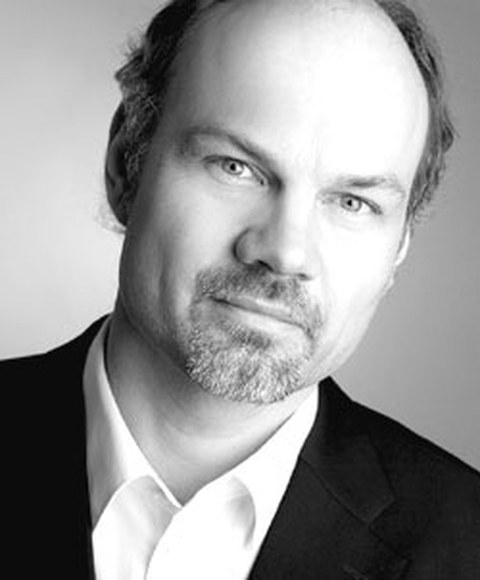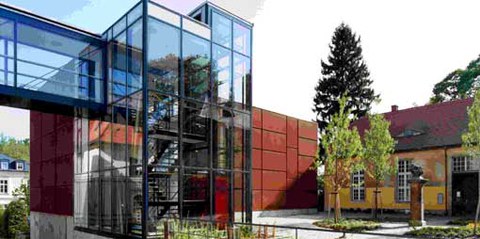Architect and Chamber President
(Interviewed in 2011)
Dagmar Möbius
Alf Furkert comes from a family of master builders in Dresden. He knew from an early age what career he wanted. And his hypothesis proved correct while he was working on his final-year architecture dissertation. This was not his only stroke of fate – he became president of the Architektenkammer Sachsen, Saxony's Chamber of Architects, two years ago.

Alf Furkert
"All my memories of my grandfather are of him standing at the drawing board in a white coat," Alf Furkert recalls; "I grew up in his house." From an early age, the Dresden native was interested in his grandfather's profession and architecture. Although he developed other interests in areas such as computer science during his school years, his commitment to one career became stronger with each vacation job he took with one of the few freelance architects in the neighborhood. "Otherwise, I had a classic GDR education," says the 46-year-old with a grin. After graduating from Romain-Rolland-Gymnasium high school and serving 18 months in the army, Alf Furkert worked as a scaffolder at the "Kombinat Bau und Modernisierung Dresden" construction and modernization state combine. This was his chosen back-up option in case he "did not survive the planned degree program." After three months, he was officially qualified as a semi-skilled worker. "That was important to me," he says. It was hard physical labor. He worked mainly on complex redevelopment in Dresden's Neustadt district. "And I got to know people I probably would never have met otherwise."
From 1985, he studied architecture at TU Dresden. Weimar would also have been an option for him. However, family commitments led to his choosing his home university. "And I ended up liking it there, so I never regretted my decision." He rates the technical aspect of the program as "very good." The foundations in building construction and building physics, for example, as well as structural engineering. As the core program did not include any humanities subjects, he took additional classes including aesthetics and French. He also studied West German construction journals in the university library. "Yes, they were available in the GDR!" he laughs.
In 1989, the summer before the fall of the Berlin Wall, Alf Furkert interned with the Leipzig district architect and worked on the redevelopment of the center of Frohburg in the south of Leipzig. That period of his life left a deep impression on him, and not only because his daily route to work took him past the Nikolaikirche church. "In Frohburg, I lived in the hotel 'Zur Post,' which featured in the 'Eulenspiegel,' a satirical magazine, because it was so shabby and run-down."
Alf Furkert resolved his internal conflict between the professional and the political with great personal initiative. In October 1989, he co-founded the students' council in his 'section.' He advised and represented the "IG Äußere Neustadt" citizens' initiative on construction matters. This was useful for his final-year dissertation, in which he simulated how the building code of the Federal Republic of Germany would apply to the Äußere Neustadt district. "What started as a hypothesis ended in reality," he notes. No wonder that when he defended his dissertation just a few days after the monetary union, a professor asked him what the value of his work was.
After graduating, Alf Furkert worked for a year on the island of Rügen and in Dresden. He has been self-employed in Dresden since October 1991. He calls his first major project the "mother of all offices." The renovation of Dippoldiswalde town hall was carried out in stages and finally completed in 1999. "Minor jobs" included site management for the casemates under Brühl Terrace (Brühlsche Terrasse) in Dresden, in other words excavation and initial development work.
In 2005, Furkert partnered with Stephan Hänel, also a graduate of TUD, to form the architectural firm hänel furkert | architekten. "The great advantage of partnership is combined energy and expertise and shared responsibility." Today, the firm employs 15 people: architects, civil engineers, economists, color consultants, construction technicians, and drafters. The firm's main specialties are structural engineering and new builds, renovation and remodeling, urban development, planning, and consultancy and expert opinions in the field of historical monuments. Its list of completed projects is extensive and includes everything from the Victor-Klemperer-Saal hall at TUD, completed in 2010, Hörsaal 136 lecture hall, the Beyer-Bau building and TUD's fluidized bed testing facility in Pirna to kindergartens and buildings for the University of Applied Sciences (HTW) Dresden in Pillnitz. Each year, hänel furkert enters around five to eight architectural design competitions – these are a particularly costly and labor-intensive form of contract tendering. At least well into the thousands of euros and often more must be invested in each competition. One model alone can cost up to 1500 euros. "One or two people will work on the model for three or four weeks," the architect explains. However, "winning a competition raises the profile and status of a project and gains recognition from other colleagues in the field."

The archives of the Evangelische Brüder-Unität church in Herrnhut
Archives are Alf Furkert's favorite projects. Why? "That's just the way it turned out. Preserving things for the future is much more than simply putting a few files in the basement." The competition for the Landeskirchliches Archiv regional church archives in Nuremberg, the archive of the Evangelische Brüder-Unität church in Herrnhut and the Landeshauptarchiv Sachsen-Anhalt (Saxony-Anhalt central state archives) in Magdeburg are just a few examples of projects in which Furkert's firm has been involved. A number of projects are currently in progress: the renovation of the stables at Graditz stud farm near Torgau, a new school and housing in Chemnitz, and the renovation of the "pond houses" at Moritzburg Castle. It bothers Furkert that architects often go unmentioned in publications, and he "would like to see more awareness on the part of clients."
He himself, however, no longer has time to spend on his computer drafting projects. In April 2009, he was elected president of Saxony's Chamber of Architects, of which he has been a member since 1992. He invests around a third of his working hours in that role. Furkert also liaises with the Faculty of Architecture at TU Dresden on behalf of the Chamber of Architects.
Alf Furkert has links to "his university" almost every day. "Our graduating class is everywhere," he grins. He often runs into former peers at government agencies and departments and in partner firms. Furkert has ongoing partnerships with the landscape architecture firm Rehwaldt, and FMS-Freiraumplanung mit System.
Would he study architecture again? Absolutely. "In GDR times, I was often asked if I wanted to design prefab apartment blocks," he says. "You can't let yourself get sidetracked. It was worth it – the market was full of potential when I finished my studies."
